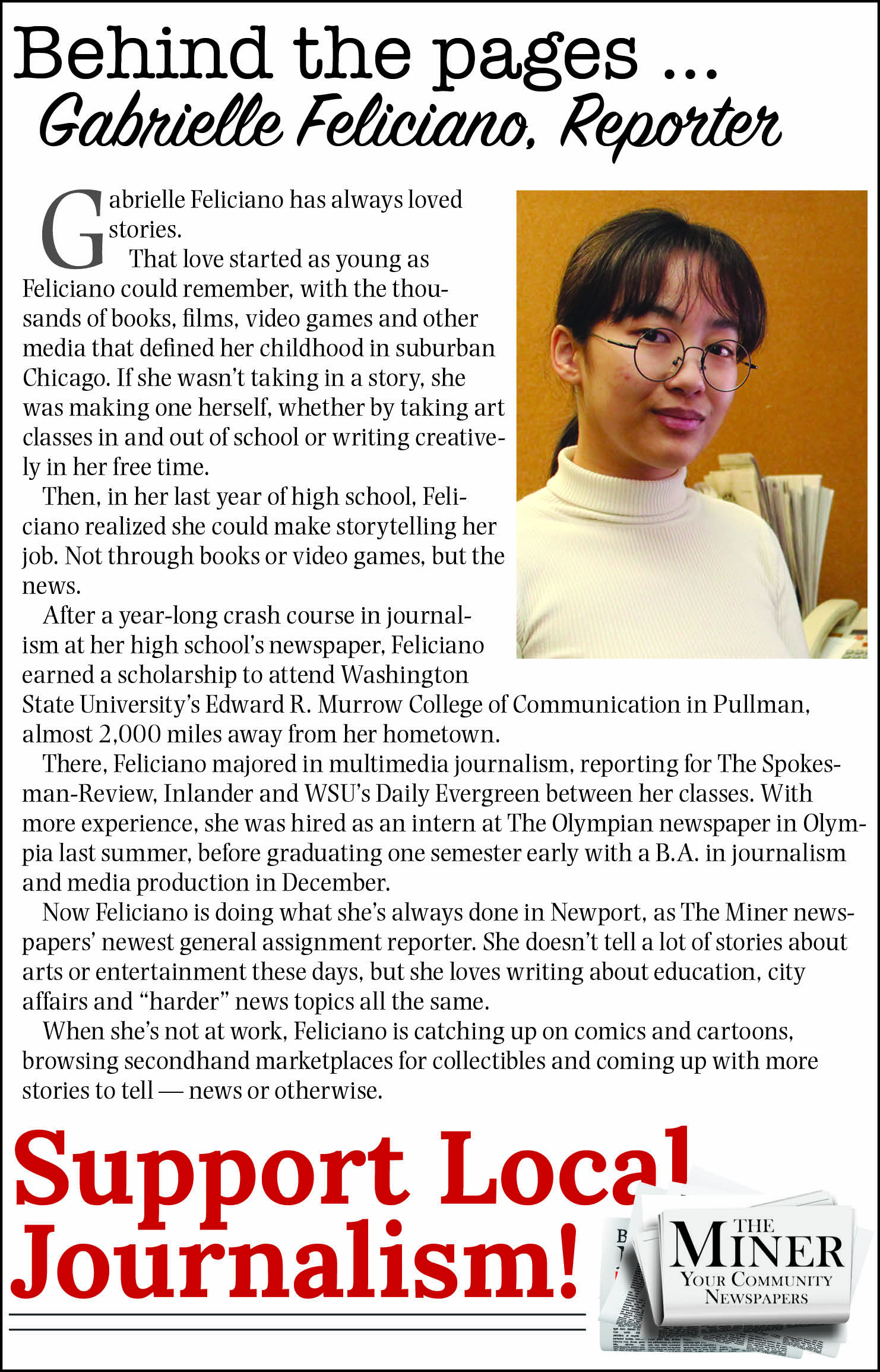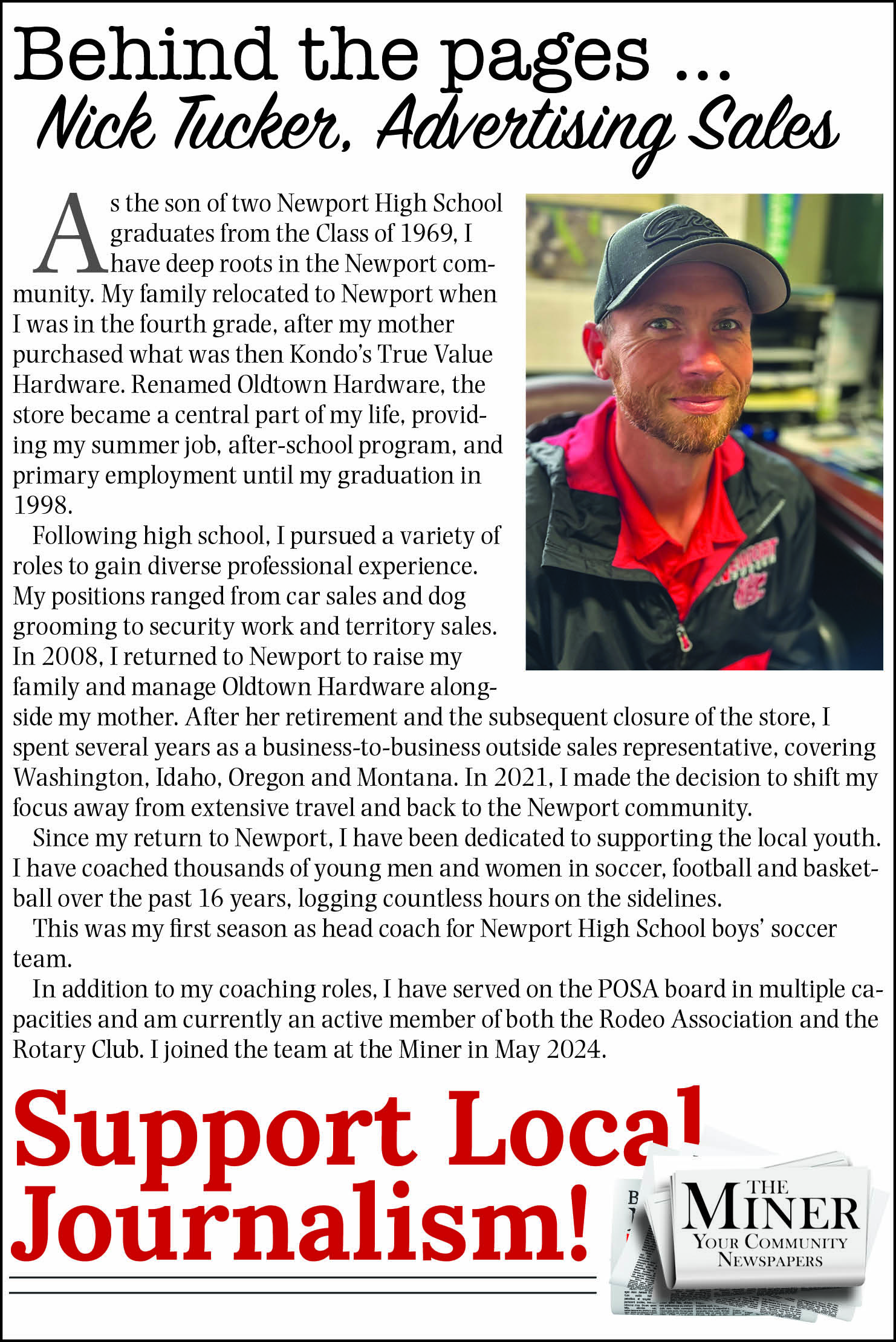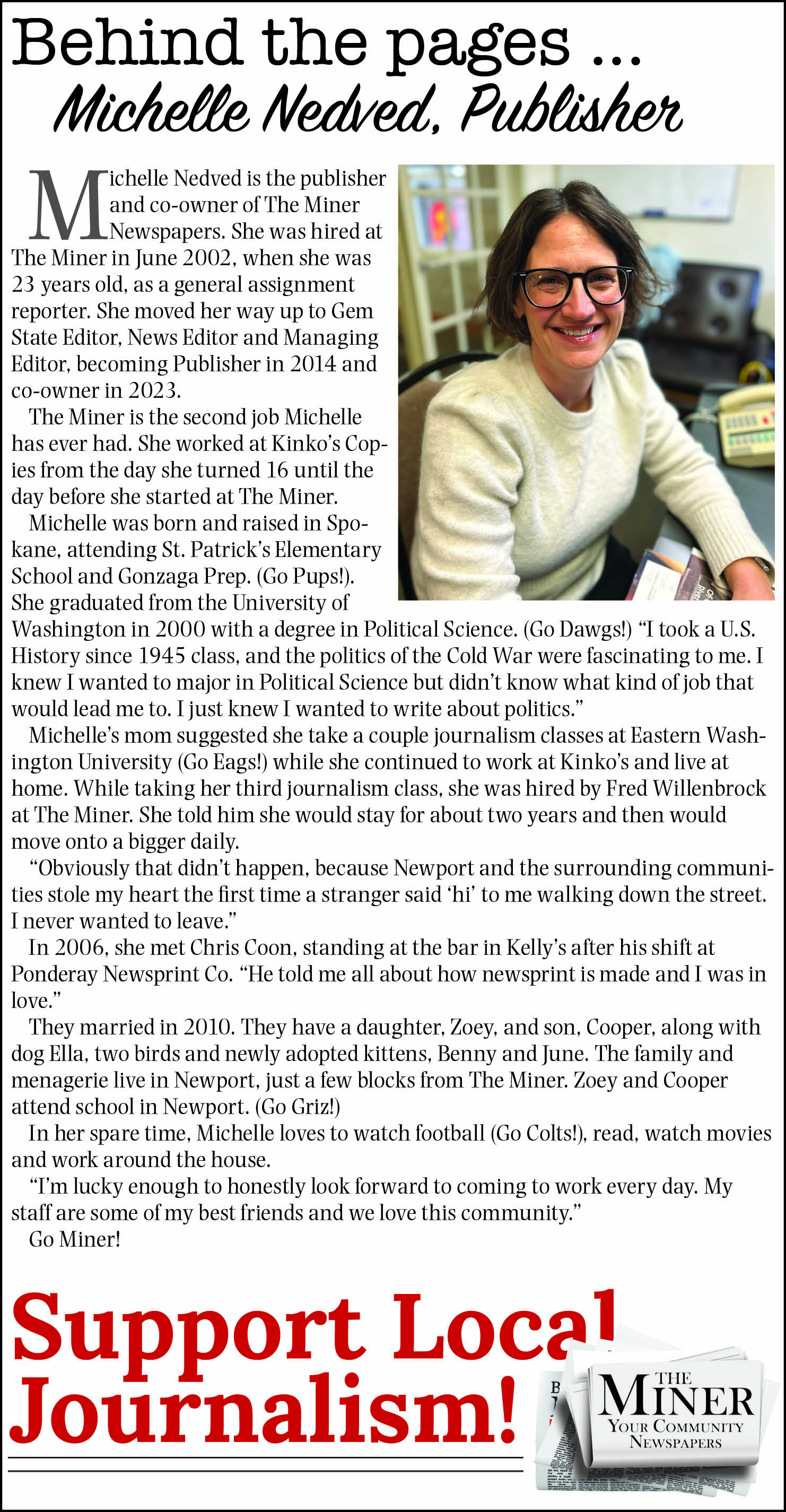NEWPORT — As ChatGPT reached schools, Todd Matthews questioned why he was still working as an English teacher.
Matthews, who has taught at schools since “before computers were on desks,” said he and the rest of the Newport School District faculty knew ChatGPT was coming. So when it was initially released on Nov. 30, 2022, he immediately tried to see what it could do.
“At that time it was like, ‘Oh my gosh,’” Matthews said. “‘This thing will write full-on papers.’” ChatGPT is a generative artificial intelligence chatbot that has gained around 800 million users worldwide in the two-and-a-half years since its initial release. It does not just write papers; users can ask ChatGPT to write almost any form of text, including emails, test questions and answers, lessons and individualized learning plans. And it responds in seconds.
ChatGPT is one of many generative AI models that have reached NSD and other Washington school districts over the last few years. Unlike the AI that sorts email inboxes and recommends products online, generative AI gathers and uses existing data to create allnew content, such as text, images, audio and videos.
“It’s not going anywhere,” Matthews said. “So we have to understand that we have to learn how to use it as a tool as opposed to fearing it.” Though part of the digital citizenship curriculum NSD is developing will teach how to write AI prompts and fact-check AI responses, NSD has yet to decide on an AI policy. Nor has NSD installed an AI detector, as none are “really 100% foolproof,” Matthews said.
NSD yet to decide on AI policy
“[AI is] the newest, fastest-moving educational software that you can find, and the Newport School District is nowhere near being ready,” said Jenny Erickson, Stratton Elementary School principal. “And we move cautiously.”
While some teachers have zero tolerance for AI in their classrooms, other teachers and at least three-quarters of the student body have used AI for educational purposes. Cheating is one, but staff and students also use AI as a teaching assistant, tutor or editor. In other words, as educational tools.
Besides ChatGPT, these include Magic School, Brisk Teaching, Drift and other AI-powered platforms for educators. All have assisted teachers with planning lessons, giving feedback, differentiating instruction between grade levels and compiling and analyzing data. NSD network analyst Jamison Maybright said he knew teachers who “really are enjoying using Canva,” which has an AI image generator.
Sadie Halstead Middle School and Newport High School have access to Grammarly, an AI writing tool that can both correct misspelled words and rewrite entire paragraphs for tone or clarity. At Newport High School, a manikin and a commercial driving simulator are at least partially powered by AI, and the Adobe programs used in Matthews’ classes have AI features.
“It’s all about working smarter, not harder,” Erickson said. “And accessing resources rather than having to spend hours and hours researching if you know exactly how to use the tools available.”
Alongside Newport High School principal Steve Bouldin, Erickson attended this year’s AI Innovation Summit in February in Seattle. She said she returned from the convention with AI tools that can “really lighten the load” of Stratton Elementary School teachers. Tasks like lesson planning and data analysis would no longer take them hours with generative AI models’ seconds-long response times.
“In education, time is money,” Erickson said. “And we never have enough time.”
Neither do many students. But AI can “bridge that gap,” Matthews said, assisting students with outlining ideas, researching sources and summarizing lectures. A generative AI model can even substitute as tutors for students who cannot find or afford any for academic pursuits like the SAT.
Critical thinking, research still important
One of Matthews’ students is Cooper Ericksen, a junior at Newport High School. He wants to work in mathematics or computer science and uses ChatGPT while developing code for programs. If he needs help with a segment of code, Ericksen messages it to ChatGPT, asking for an explanation of its response.
“If used in the right way, it can be a great tool for students to learn,” Ericksen said. “It’s just that point where students rely on it to think for them, where they lose that critical thinking and just stop even trying to figure things out. They just ask the AI to tell them the answer.”
That can lead to cheating, though Matthews points out that “cheating is nothing new because of AI.” Still, he shares Ericksen and other students’ concerns about AI users losing critical thinking skills. Students may not try to work through problems if AI can solve them in seconds, and they miss out on opportunities to learn when content can be generated by AI instead.
“There’s a really good benefit into grinding through a problem for kids,” Matthews said. “If you don’t have to, they take the easy way sometimes.”
And Ericksen said AI can be unreliable and inaccurate.
The quality of a generative AI model’s response depends on the quality of the user’s prompt, and part or all of the response itself may be a “hallucination” — false or misleading information AI presents as fact. Hence, the prompt-writing and fact-checking in NSD’s digital citizenship curriculum, Maybright said.
Based on his experience, Ericksen said teachers can use AI to teach mainstream or lower-level topics like high school algebra, but not more niche, specific topics like the higher-level mathematics in his independent calculus class.
“There’s already an element of, do your own research, do your own fact-checking, that is going to become an even more critical skill as folks are using AI more,” Maybright said.
Cybersecurity, student data privacy a concern
Other concerns of NSD’s are cybersecurity and student data privacy. When staff use AI or “anything electronic,” Erickson said they are expected to follow certain guidelines. These include reporting phishing attempts, such as spam emails, and not inputting students’ personal information. NSD also has firewalls and restrictions in place to avoid accidental guideline violations.
“Student data privacy is paramount,” Maybright said. “We’re seeing a lot of cyberattacks on school districts and ransomware trying to attempt to capture that data.”
Before deciding on an AI policy, Maybright said NSD will stay in contact with other school districts as they await additional guidance on AI from the Washington Office of Superintendent of Public Instruction.
OSPI’s guiding principles for AI in education involve a human- centered approach to AI, claiming that human reflection and understanding are key for generative AI. Referred to as the human-AI-human approach, OSPI recommends putting staff and students “at the beginning and end of all interactions with AI,” providing guides on the ethical considerations for AI and the responsible use of AI in the classroom.
NSD’s AI policy will comply with OSPI’s, taking a similar human- centered approach informed by community feedback.
“Bottom line is we teach people,” Erickson said, seconded by Maybright. “And each little person is a unique individual with unique learning strengths and needs, and our job is to form relationships with those people. AI doesn’t form relationships.”
Matthews said he gives better feedback to his students than AI — at least, for now. A generative AI model may someday be a smarter teacher than he is, Matthews said, which is why many teachers remain afraid of AI. But as it is, AI has what Matthews called a humanistic piece.
“I don’t know if that’s ever really going to go away,” Matthews said. “A complete teaching assistant is how we should view [AI].”
AURELIA JOHNSON, A SOPHOMORE AT NEWPORT HIGH SCHOOL, CONTRIBUTED TO THIS ARTICLE. IF YOU ARE A YOUNG PERSON WITH A STORY IDEA, CONTACT DON GRONNING AT [email protected].
.png)














